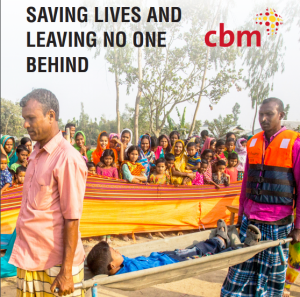
The Gaibandha Model for disability-inclusive disaster risk reduction – This publication is based on the experience of CBM and its partners in implementing disability-inclusive, community based disaster risk reduction programs in some of the most flood-affected communities in Bangladesh. It outlines a model for putting people with disabilities at the centre of disaster risk reduction.
Lead compiler: Dr. Manuel Rothe
Authors: Dr. Manuel Rothe, David Brown, Oliver Neuschäfer
Contributors: Subir Saha, Tahmina Rahman, Ashutosh Dey, Gopal Saha, Jamal Uddin
Table of content
- Protecting lives and saving progress through disaster risk reduction
- Strong Self-help Groups : The key to enable people with disabilities to become leaders for change
- The ABC of advocacy for DiDRR at local level
- Leaving no one behind: Making the local DRR system inclusive
- Engaging schools to build community DRR awareness
- Inclusive livelihoods for resilience
Why inclusion matters
Not everyone faces the same risk from disasters. People with disabilities, older people, pregnant women, children and other at-risk groups are often forgotten in DRR and left behind when disaster happens. They are excluded from disaster preparedness measures, are invisible when it comes to community mapping or evacuation planning, find it harder to access shelters and safe spaces due to environmental barriers or protection risks, and receive inadequate or inappropriate relief and support when they suffer from disaster loss.
The international community recognises inclusion as a guiding principle of DRR. This is reflected in the Sendai Framework for Disaster Risk Reduction (2015-30), which was endorsed by the UN General Assembly. It acknowledges that DRR requires an all-of-society engagement and partnership, which promotes the empowerment and inclusive, accessible and non-discriminatory participation of all people disproportionately affected by disasters, especially the poorest. Effective DRR thus requires a gender, age, disability and cultural perspective in all policies and practices.
With this obligation to leave no one behind, it is now the responsibility of all actors in DRR to commit to inclusion and translate their commitment into action!
Download : The Gaibandha Model for disability-inclusive disaster risk reduction (PDF, 9MB)